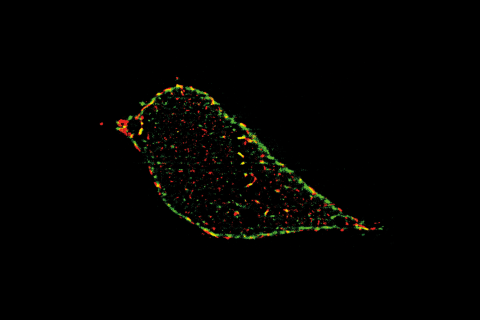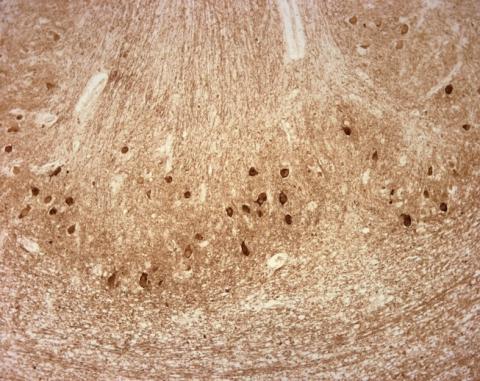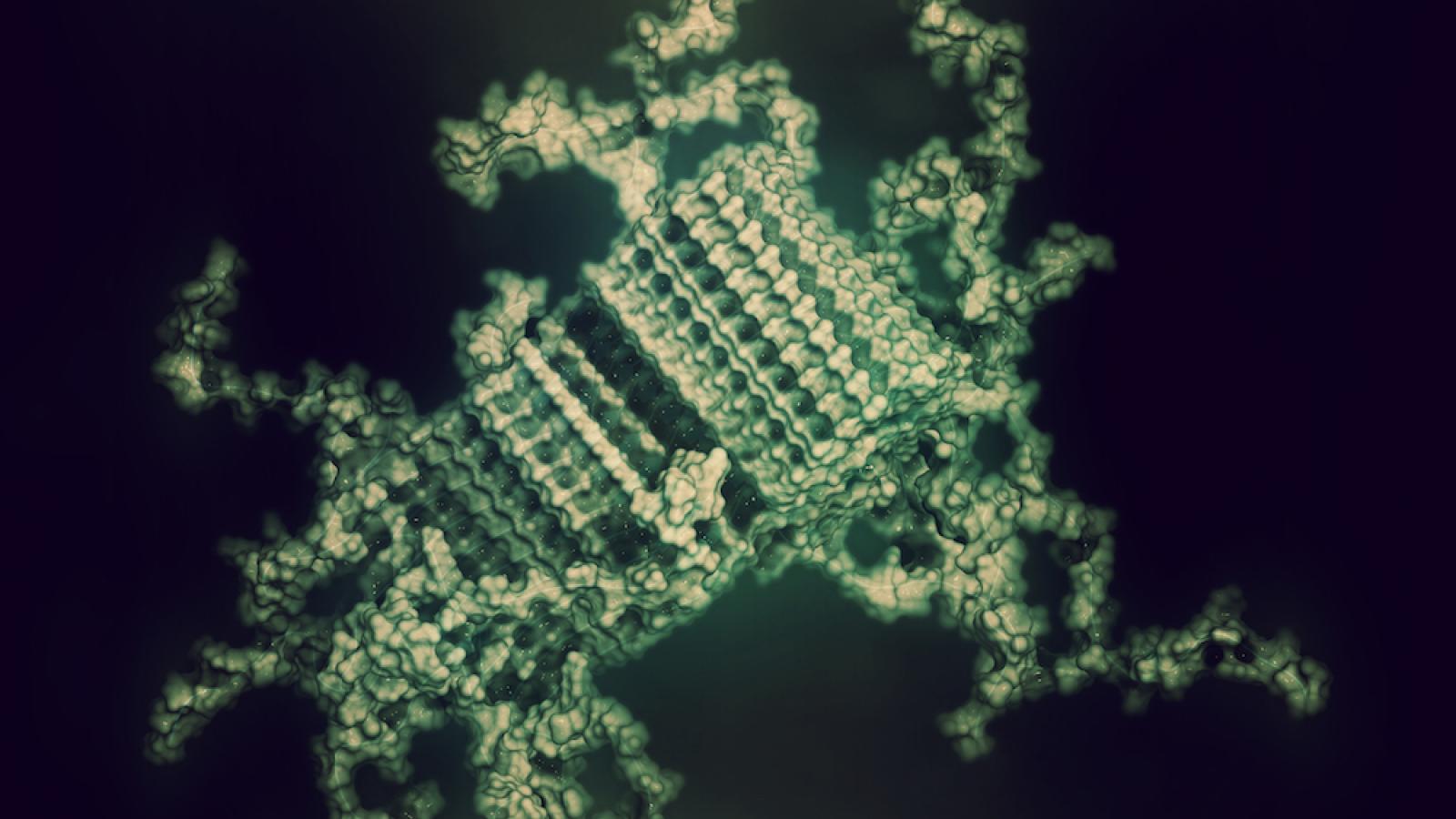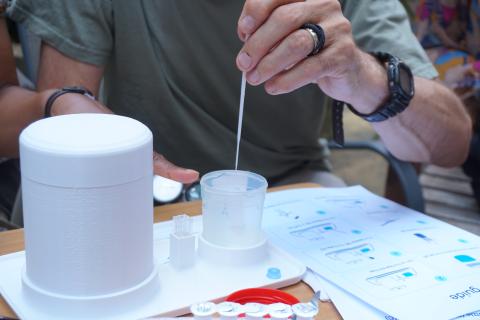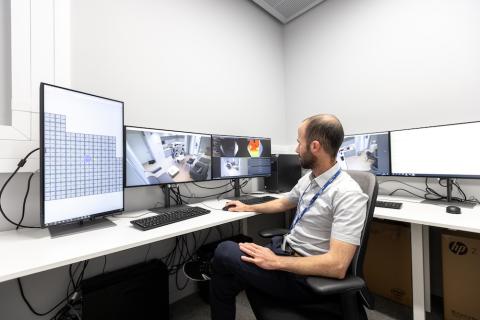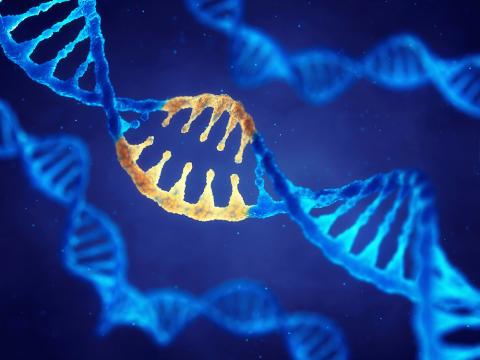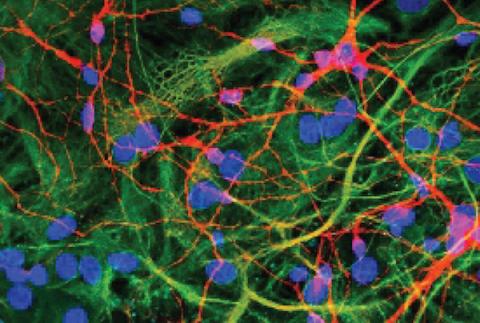What is Lewy body dementia?
Lewy body dementia is one of the more common types of dementia and is characterised by the build-up of abnormal clumps of protein (called Lewy bodies) gathering inside brain cells.
The disease particularly affects a person’s ability to think and move and can cause hallucinations, changes in alertness, and sleep disturbances. It tends to develop slowly and get gradually worse over several years. In the early stages, it is often mistaken for Alzheimer’s disease and can be diagnosed incorrectly.
Lewy body dementia has two subtypes: Dementia with Lewy bodies, and Parkinson’s disease dementia. These subtypes can affect people in very similar ways, and the diagnosis of one or the other depends only on the onset and timing of certain symptoms.

Frequently asked questions
- How common is Lewy body dementia?
Lewy body dementia is one of the three most common types of dementia (along with Alzheimer’s and vascular dementia).
Around 10% of younger people with dementia have Lewy body dementia1.
Lewy body dementia usually occurs in people with no family history of the condition, although there have been very rare cases where it does seem to run in a family2.- What are the symptoms of Lewy body dementia?
Each case of Lewy body dementia is as individual as the person living with it. The symptoms are complex and not everyone will experience all of the common symptoms or develop them at the same time.
The main difference between the two subtypes of the disease - dementia with Lewy bodies and Parkinson’s disease dementia - is the timing of when certain symptoms first occur:
- In dementia with Lewy bodies, changes in thinking, alertness and visual perception (cognitive symptoms) are experienced at an early stage, and difficulty with movement (parkinsonian symptoms), if present, occurs either at the same time or later.
- In Parkinson’s disease dementia, parkinsonian symptoms are experienced first, followed later by cognitive changes. Not everyone with Parkinson’s will go on to develop dementia but the risk of developing dementia is increased.
Lewy body dementia typically causes problems with thinking speed, understanding, judgement and visual perception, with language and memory often less affected, particularly in the early stages.
There are other symptoms of Lewy body dementia that can help distinguish it from other types of dementia. These include:
- Seeing things or people that are not there (visual hallucinations): These are usually silent and, in most cases, not distressing.
- Marked swings between alertness and confusion or sleepiness: This can happen unexpectedly and change over minutes or hours.
- Slow movement, stiff limbs, tremors (uncontrollable shaking) and shuffling when walking: This can be similar to Parkinson’s disease.
- Fainting, unsteadiness and falls
- Disturbed sleep: This could be talking in sleep, acting out dreams or sleepiness during the day. Up to 90% of people with Lewy body dementia will experience issues with sleep1.
- Dysphagia (swallowing problems)
- Depression and anxiety
Daily activities become increasingly difficult and there may be further health problems, such as an injury after a fall or a chest infection caused by accidentally inhaling food.
More information about symptoms is available on The Lewy Body Society’s website.
- How is Lewy body dementia diagnosed?
If you or someone you care about is experiencing symptoms of Lewy body dementia, please contact a GP for an accurate diagnosis and to rule out other conditions.
The GP may refer you or your loved one on to a memory or dementia service, Parkinson’s service or neurologist. This may depend on which symptoms appear first.
The neurologist or service will assess physical health and ask about symptoms such as difficulties with memory, ability to carry out usual activities, changes in behaviour and mood and changes in alertness. It can be helpful to have a family member at the appointment to give their perspective on some of these questions.
Cognitive testing and the use of certain brain scans can also be helpful in determining the diagnosis.
Lewy body dementia is often misdiagnosed as Alzheimer’s disease and is sometimes mistaken for delirium.
- What treatments are available for Lewy body dementia?
There are several treatments available which can help to control some of the symptoms of Lewy body dementia, but none yet that slow the progression of the disease.
Prescribing should be started under the supervision or advice of a doctor with specific experience of Lewy body dementia.
Treatments include:
- Medications: Cholinesterase inhibitors, such as rivastigmine and donepezil, can be used to increase the levels of chemical messengers and can help with symptoms related to memory, thought, judgement, perception and processing information. Medications used for Parkinson’s disease, such as levodopa, can be used to help with movement. However, levodopa can make hallucinations worse in some cases and these treatments should be monitored by a specialist.
- Therapies: Physiotherapy, occupational therapy and speech and language therapy may be helpful to some people with Lewy body dementia for problems with movement, everyday tasks and communication.
- Psychological therapies: Activities and exercises designed to improve memory and problem-solving skills (known as cognitive stimulation) are also recommended.
More information on treatment options can be found on the NHS or The Lewy Body Society websites.
- How can I get involved in research and trials for Lewy body dementia?
People with Lewy body dementia are currently under-represented in trials. If you are interested in taking part in research and trials, we recommend visiting the Join Dementia Research website.
After signing up Join Dementia Research, you are matched to studies you may be able to take part in online, nationally or in your area. Then you can decide whether to take part – it is as easy as that.
- Support for Lewy body dementia
Support is crucial, not only for those living with Lewy body dementia, but also for their families and carers. Local dementia support groups, charities and online communities can offer valuable help and friendship. Organisations that can help include Dementia UK, Age UK and Carers UK. For more information about support available, visit our page on ‘support for people affected by dementia'.
What causes Lewy body dementia?
Lewy body dementia is caused by small, round clumps of protein building up inside nerve cells in the brain. One of these proteins is called alpha-synuclein, and the clumps it forms are called Lewy bodies.
These deposits are also found in most people with Parkinson's disease, and they build up in areas of the brain responsible for functions such as thinking, visual perception and muscle movement. The symptoms that people with Lewy body dementia will experience depend on where the Lewy bodies are found in the brain.
Similar to other neurodegenerative conditions, it is not clear why the deposits develop and how exactly they damage the brain, although there is growing evidence that the proteins affect the brain’s normal functions by interfering with signals sent between brain cells. As with other dementias, it is likely that many factors contribute to disease initiation and progression including ageing, and dysfunction of the immune and vascular systems.
Researchers such as Dr Tim Bartels and Prof David Klenerman have collaborated to help identify the exact toxic of alpha-synucein showing that it changes over the course of the condition. This finding could have significant implications for the timing of future treatments.
Additionally, as Lewy body dementia and Parkinson’s are both characterised by the same toxic protein build-up – alpha-synuclein – insights into the underlying biological mechanisms can be shared in many cases. Find out more on the Parkinson’s disease condition page.
Video showing lightsheet microscopy of a whole mouse brain cleared of lipids and fat, and stained for alpha-synuclein tagged with florescent marker. Credit: James Conway, Bartels Lab.
Latest news
